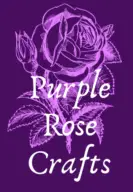
A few weeks ago we talked about 4 ways to make increases while knitting, from yarn overs, to lifted increases. Today, We’re going to discuss 3 ways to make knitted decreases, so you can shape your work with increases or decreases to get the look you want. This can help both with shaping, if you want to design your own patterns, or just following patterns if you’re still learning.
Today, I’m going to show you knit 2 together (k2tog), slip slip knit(SSK), and a cleaner SSK. I’m using SSPK to differentiate.

Now, It’s important to discuss what each is, and why we need different ones.
First, k2tog is probably the first one many of us learned when your learning how to knit. It’s the easiest and the other 2 are built on top of the fundamental k2tog. In fact, they’re pretty much level 1, level 2, level 3, where level 3 is built on top of your knowledge of level 2.
Anyway, when you’re learning how to work k2tog, you’ll likely start by making a hat, or something simple like that. Many hat patterns, including mine, use just k2tog and are simply lovely.

If you are a little more experienced, you may venture into something slightly more complex, like slippers, maybe a sweater or even socks and at this point, you’ll need to be matching both sides and will need another decrease to create a mirror image on the other side of your item.
That’s where the others come from. It’ll also help if you venture into the world of pattern creation.
QUICK TIP
Decrease on every other row, not every row, to keep your work looking clean and not get too small to fast.
Knit 2 Together – Level 1

This stitch is fairly simple, in that you simply insert your needle into your next 2 stitches, and knit 1 stitch.

This creates the lovely pattern you see here, where your decrease leans to the right, and the stitch on the right disappears underneath and the left one sits on top.
If you want to learn how to do this, check out this post, about knitting hat crowns.
Slip Slip Knit (SSK) – Level 2

Looking at our regular stitches, we can see that the front part of the loop goes to the right, like the stitch on my left needle in this pic. But to do SSK, we will need to turn our stitch around, so the left part of the loop is at the front, like in the stitch at the end of my right needle in the picture. This will show the left leaning stitch, instead of the right leaning version we did above.

So, to begin, insert your needle into the first stitch, like we’re going to knit it, but just slip it over to your right needle for now. Then do it again with the second stitch.

Finally, insert your left needle into the front of the 2 stitches you just slipped, so your right needle comes out the back, and finish your knit stitch, through the back loop.

This is the finished product of our SSK’s when worked every other row, meaning, when knit flat, we purled back along the wrong side, without doing any decreases. When knitting in the round, we would to a full row of stitches without any decreases, so we don’t decrease too fast.
Slip (knitwise) Slip Purlwise Knit (2 together) – SSPK
Our final decrease in this post is a small modification to the SSK we just did, to create a more clean looking decrease.

To do this one, insert your right needle, and slip the first stitch knitwise, like we did in SSK. Then for the second stitch, insert it like you’re going to purl, but slip it to the right as well.

Finally, insert your left needle into the front of the 2 loops as we did for SSK, and finish your knit stitch through the back loop.
As you can see, by comparison to SSK, this one looks much neater when worked up several rows.
My plan is to show an alternative hat crown where we use these to create an X pattern instead of our 6-8 pointed star I showed at the top. Oooo, I’m so excited.
Do you ever have so many ideas and literally not enough time to get them on paper, let alone actually knit them out? That’s so me. I wish I had unlimited hours in the day, and that I could knit and crochet super fast, like the Flash. I bet he could knit so fast!
Anyway, I shall digress. If you want to see this tutorial in action, watch below! And if you make anything from our patterns and tutorials, please tag us in your Instagram post. I love, love, love, sharing them to my stories!
I would love to see what you do with these stitches.
Much love,


